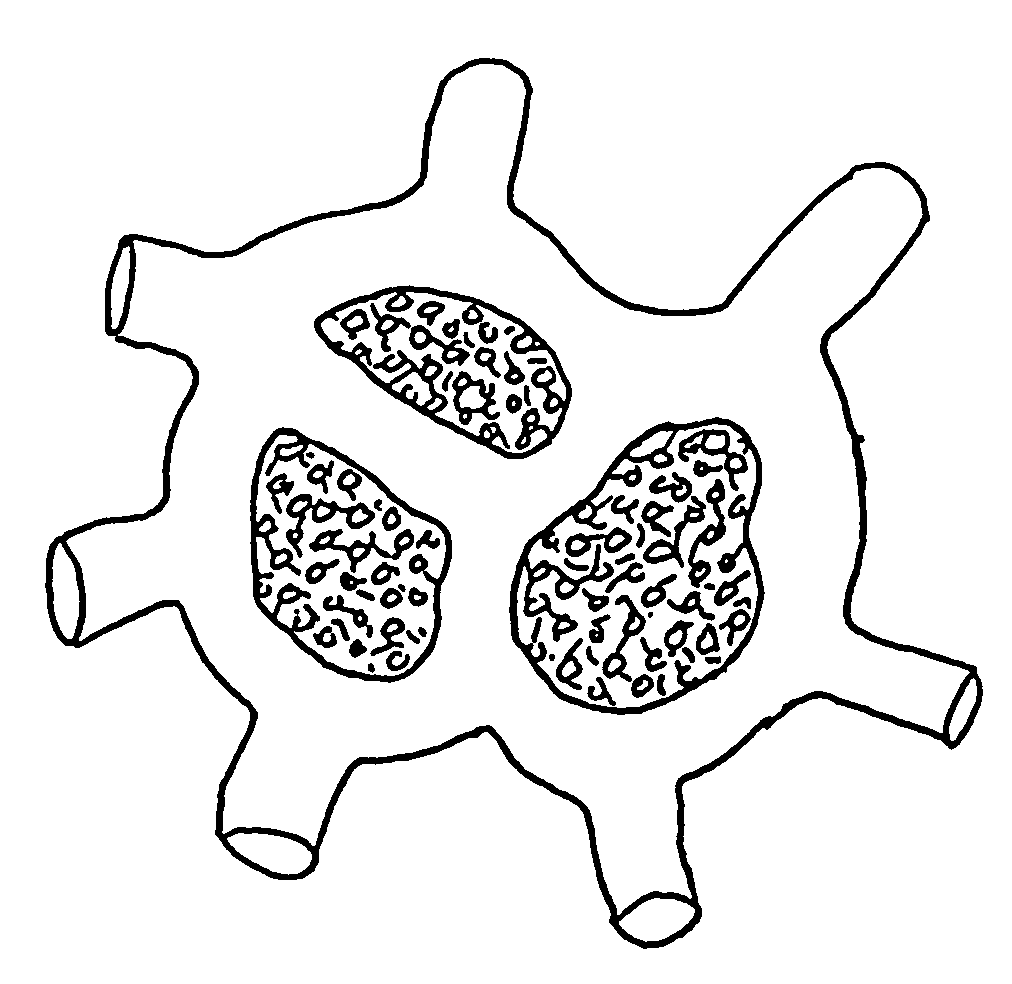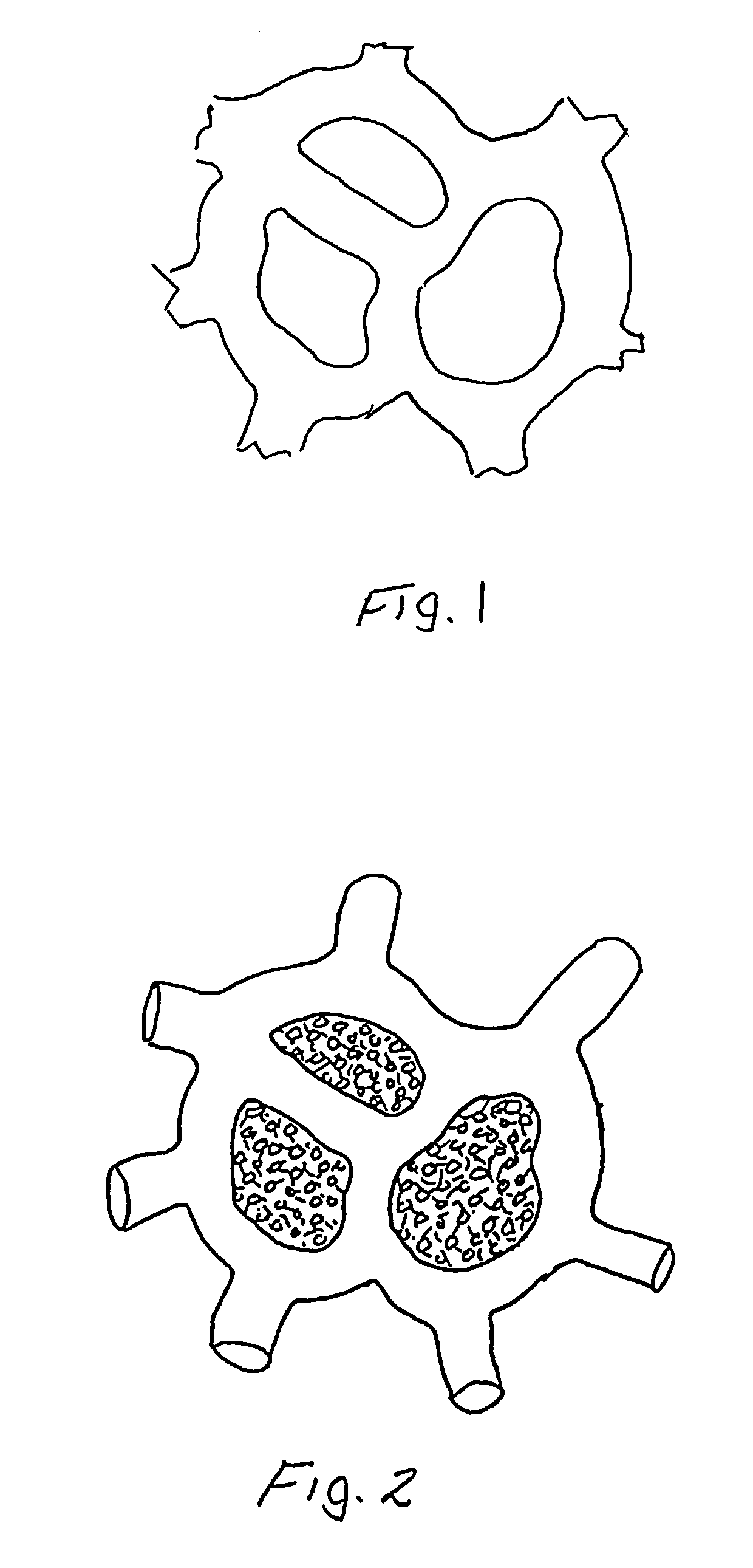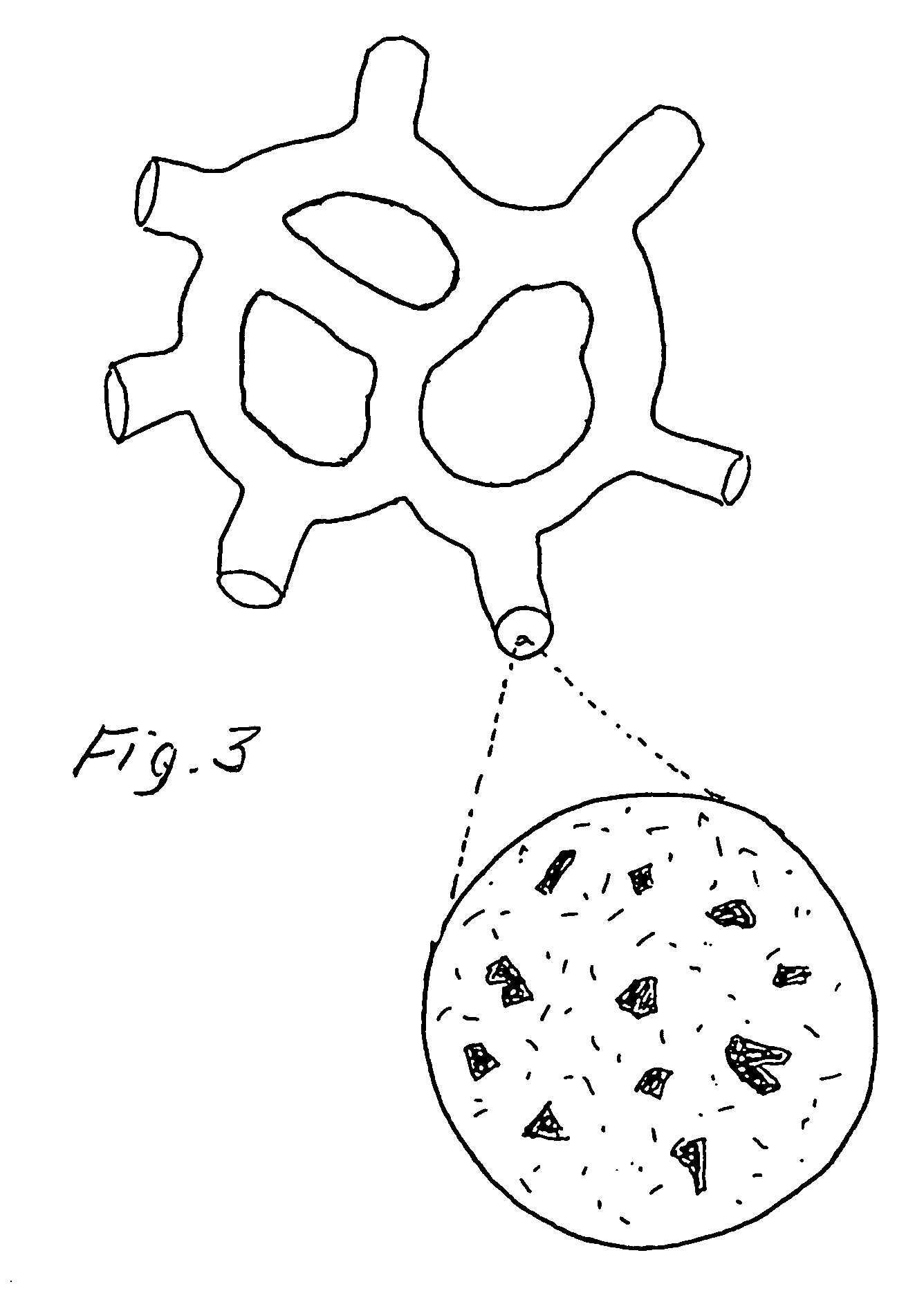Process for producing rigid reticulated articles
a technology of reticulated articles and rigid materials, which is applied in the field of bone substitute materials production, can solve the problems of inability to achieve a substantially fully open and interconnected porosity, heavy and dense substitute materials of this type, and significantly stiff structure, and achieve the effect of small pore sizes
- Summary
- Abstract
- Description
- Claims
- Application Information
AI Technical Summary
Benefits of technology
Problems solved by technology
Method used
Image
Examples
example 1
[0063]A zirconia slip was prepared by combining the following ingredients and mixing them thoroughly by ball milling in a polyethylene container using zirconia media:
[0064]
150 gpartially stabilized zirconia powder (Zirconia Sales America) 2.25 gdispersant (Rohm and Haas, product D-3021) 15 gbinder (Rohm and Haas product designation B-1000)0.375 gsurfactant / wetting agent (Air Products Surfynol ™ TG) 0.26 ganti-foaming agent (Henkel Nopco ™ NXZ) 36 mldeionized water.
Pieces of reticulated polyester-polyurethane foam 10–80 pores per inch (Stephenson and Lawyer) were immersed in the above slip and repeatedly compressed to remove air bubbles trapped inside. The foams were removed from the slip and the excess slip was allowed to drain. Further excess slip was removed by passing the foams between a pair of stainless steel squeeze rollers several times. The resulting pieces were allowed to dry at room temperature followed by drying at temperatures up to 100° C. in air. When the pieces ap...
example 2
[0069]This example describes the preparation of a zirconia-hydroxyapatite composite supporting framework, the struts of which bear a coating of hydroxyapatite.
[0070]Two ceramic slips were prepared. The first, comprising zirconia containing 15 volume percent hydroxyapatite and referred to as a ZHA-15 slip, was prepared by ball milling as in Example 1 using the following ingredients:
[0071]
273.99 gpartially stabilized zirconia 26.01 ghydroxyapatite (HiMed) 3 gpoly(ethylene oxide) binder (Acros) 6 gdispersant (Darvan ™ C, R. T. Vanderbilt) 0.75 gSurfynol ™ TG surfactant / wetting agent 126 mldeionized water.
[0072]The second slip, referred to as an HA slip, was prepared by ball milling using the following ingredients:
[0073]
50 ghydroxyapatite (HiMed) 0.5 gpoly(ethylene oxide) binder (Acros)0.125 gSurfynol ™ TG surfactant / wetting agent 1 gdispersant (Darvan ™ C, R. T. Vanderbilt) 76 mldeionized water.
[0074]Specimens of the reticulated polyester-polyurethane foam referred to in Exam...
example 3
[0093]A reticulated alumina foam with substantially open and interconnected porosity was prepared.
[0094]An alumina dispersion was prepared which contained the following:
[0095]
10568 gAl2O3 1680 mldeionized H2O 3235 gB-1000 194 gD-3021 25 gSurfynol 420 50 gNopco NXZ.
[0096]This dispersion was dispersed and mixed by ball milling in a polyethylene container with zirconia media. The viscosity of this dispersion was adjusted with deionized water. Pieces of reticulated polyester-polyurethane foam with 30–100 pores per inch (SIF—Stephenson and Lawyer) were cut. These foam pieces were immersed in the dispersion and compressed multiple times to remove air bubbles trapped inside. The foams were removed from the dispersion passed through rollers, and then the surface menisci were broken with a stream of compressed air. The “foams” were then allowed to dry at room temperature followed by drying at temperatures up to 100° C. in air. These coated foams were then subjected to a second coating proc...
PUM
| Property | Measurement | Unit |
|---|---|---|
| viscosity | aaaaa | aaaaa |
| viscosity | aaaaa | aaaaa |
| viscosity | aaaaa | aaaaa |
Abstract
Description
Claims
Application Information
 Login to View More
Login to View More - R&D
- Intellectual Property
- Life Sciences
- Materials
- Tech Scout
- Unparalleled Data Quality
- Higher Quality Content
- 60% Fewer Hallucinations
Browse by: Latest US Patents, China's latest patents, Technical Efficacy Thesaurus, Application Domain, Technology Topic, Popular Technical Reports.
© 2025 PatSnap. All rights reserved.Legal|Privacy policy|Modern Slavery Act Transparency Statement|Sitemap|About US| Contact US: help@patsnap.com



